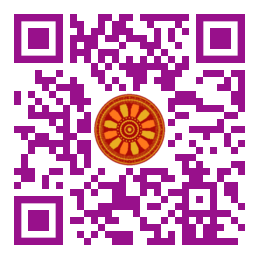
:: International Transaction Journal of Engineering, Management, & Applied Sciences & Technologies
http://TuEngr.com

ISSN 2228-9860
eISSN 1906-9642
CODEN: ITJEA8
FEATURE PEER-REVIEWED ARTICLE
Vol.13(13)(2022) |
Modelling and Simulation of Quasi-Static Indentation of Kenaf/Epoxy Composite
 Ilya Izyan Shahrul Azhar
(College of Engineering, Universiti Teknologi MARA, Cawangan Johor, Kampus Pasir Gudang, Johor, MALAYSIA),
Ilya Izyan Shahrul Azhar
(College of Engineering, Universiti Teknologi MARA, Cawangan Johor, Kampus Pasir Gudang, Johor, MALAYSIA),
Aidah Jumahat (School of Mechanical Engineering, College of Engineering, Universiti Teknologi MARA, 40450 Shah Alam, Selangor, MALAYSIA),
(Institute for Infrastructure Engineering and Sustainable Management (IIESM), Universiti Teknologi MARA (UiTM) Shah Alam, Selangor, MALAYSIA),
Sabreena Wam (School of Mechanical Engineering, College of Engineering, Universiti Teknologi MARA, 40450 Shah Alam, Selangor, MALAYSIA),
Ramzi Khiari (Laboratory of Environmental Chemistry and Cleaner Process, Faculty of Science Monastir 5000, Monastir, TUNISIA),
Discipline: Mechanical Engineering, Materials (Polymer Composites, Engineering Materials, Advanced Materials).
doi: 10.14456/ITJEMAST.2022.258
Keywords:Penetration depth; Kenaf fibre; Glass fibre; Fibre reinforced polymer composites; Fibre volume fraction; Fibre orientation; Polymer composite; ANSYS; Quasi-static indentation (QSI)
AbstractThe performance of composites loaded in quasi-static indentation is influenced by properties of reinforcement fibres, fibre volume fraction, fibre orientation and layup sequence of the composites. The effect of fibre orientation of 0?, 15?, 30?, 45?, 60?, 75?, and 90?, and layup sequence of [(+?,-?)4]s and [??2,04]s on quasi-static indentation properties of fibre-reinforced polymer (FRP) composites were determined through modelling and simulation analysis using ANSYS software. The effect of fibre types, Kenaf and Glass fibre, and the effect of fibre volume fraction on quasi-static indentation properties and penetration depth properties were simulated and analysed. It is found that as the fibre orientation angle increases from 0? to 45?, the maximum quasi-static indentation strength increases, and then starts to decrease until 90?. The maximum quasi-static indentation strength of Kenaf FRP composite was observed at 45? fibre orientation with 39.2 MPa and 40.3 MPa for layup sequence of [(+?,-?)4]s and [??2,04]s, respectively. The maximum penetration depth of the composite was observed at 45? fibre orientation with 0.312 mm and 0.315 mm for both layup sequences. The addition of 0? fibre orientation into the layup sequence of [??2,04]s helps in increasing the curve of maximum quasi-static indentation stress of Kenaf FRP composite by 25%.Paper ID: 13A13F
Cite this article:
Azhar, I. I. S., Jumahat, A., Wam, S., Khiari, R. (2022). Modelling and Simulation of Quasi-Static Indentation of Kenaf/Epoxy Composite. International Transaction Journal of Engineering, Management, & Applied Sciences & Technologies, 13(13), 13A13F, 1-9. http://TUENGR.COM/V13/13A13F.pdf DOI: 10.14456/ITJEMAST.2022.258
References
- Bakar N.H., Hyie K.M., Mohamed A.F., Salleh Z., Kalam A. (2014). Kenaf fibre composites using thermoset epoxy and polyester polymer resins: energy absorbed versus tensile properties. Materials Research Innovations, 18(S6):S6-505-S6-509. DOI: 10.1179/1432891714Z.0000000001037
- Kamrun N. Keya, Nasrin. A. Kona, Farjana A. Koly, Kazi M.M., Md. Naimul Islam, Ruhul A. Khan. (2019). Natural fiber reinforced polymer composites: history, types, advantages, and applications. Materials Engineering Research, 1(2), 69-85. DOI: 10.25082/MER.2019.02.006
- Lee C.H., Khalina A., Nurazzi N.M., Norli A., Harussani M.M., Rafiqah S.A., Aisyah H.A., Ramli N. (2021). The Challenges and Future Perspective of Woven Kenaf Reinforcement in Thermoset Polymer Composites in Malaysia: A Review. Polymers, 13, 1390. DOI: 10.3390/polym13091390
- Rajesh Purohit, Pramod Sahu, R.S. Rana, Vishal Parashar, Sankalp Sharma. (2017). Analysis of Mechanical Properties of Fiber Glass-Epoxy-Fly Ash Composites. Materials Today: Proceedings, 4(2): Part A, 3102-3109. DOI: 10.1016/j.matpr.2017.02.193
- Saba N., Paridah M.T., Jawaid M. (2015). Mechanical properties of kenaf fibre reinforced polymer composite: A review. Construction and Building Materials, (76), 87-96. DOI: 10.1016/j.conbuildmat.2014.11.043
- Salmah H., Romisuhani A., Akmal H. (2011). Properties of low-density polyethylene/palm kernel shell composites: Effect of polyethylene co-acrylic acid. Journal of Thermoplastic Composite Materials 26(1), 3-15. DOI: 10.3390/polym13091390
- Sapiai N., Jumahat A., Hakim R.N. (2014). Tensile and Compressive Properties of Hybrid Carbon Fiber/Kenaf Polymer Composite. Advances in Environmental Biology, Journal Applied Science & Agriculture, 8(8), 2655-2661.
- Shaari N., Jumahat A. (2017). Hole Size Effects on the Open Hole Tensile Properties of Woven Kevlar-Glass Fibre Hybrid Composite Laminates. Pertanika Journal of Science and Technology 25(S), 309-318.
- Yunus S., Salleh Z, Masdek N.R.N.M., Taib Y.M., Azhar I.I.S., Hyie K.M. (2018). Post-Impact and Open Hole Tensile Of Kenaf Hybrid. IOP Conference Series: Materials Science Engineering 328, 012017. DOI: 10.1088/1757-899X/328/1/012017
Other issues:
Vol.13(12)(2022)
Vol.13(11)(2022)
Vol.13(10)(2022)
Archives
Call-for-Papers
Call-for-Scientific PapersCall-for-Research Papers: ITJEMAST invites you to submit high quality papers for full peer-review and possible publication in areas pertaining engineering, science, management and technology, especially interdisciplinary/cross-disciplinary/multidisciplinary subjects.
To publish your work in the next available issue, your manuscripts together with copyright transfer document signed by all authors can be submitted via email to Editor @ TuEngr.com (please see all detail from Instructions for Authors)
Publication and peer-reviewed process:
After the peer-review process, articles will be on-line published in the available next issue. However, the International Transaction Journal of Engineering, Management, & Applied Sciences & Technologies cannot guarantee the exact publication time as the process may take longer time, subject to peer-review approval and adjustment of the submitted articles.